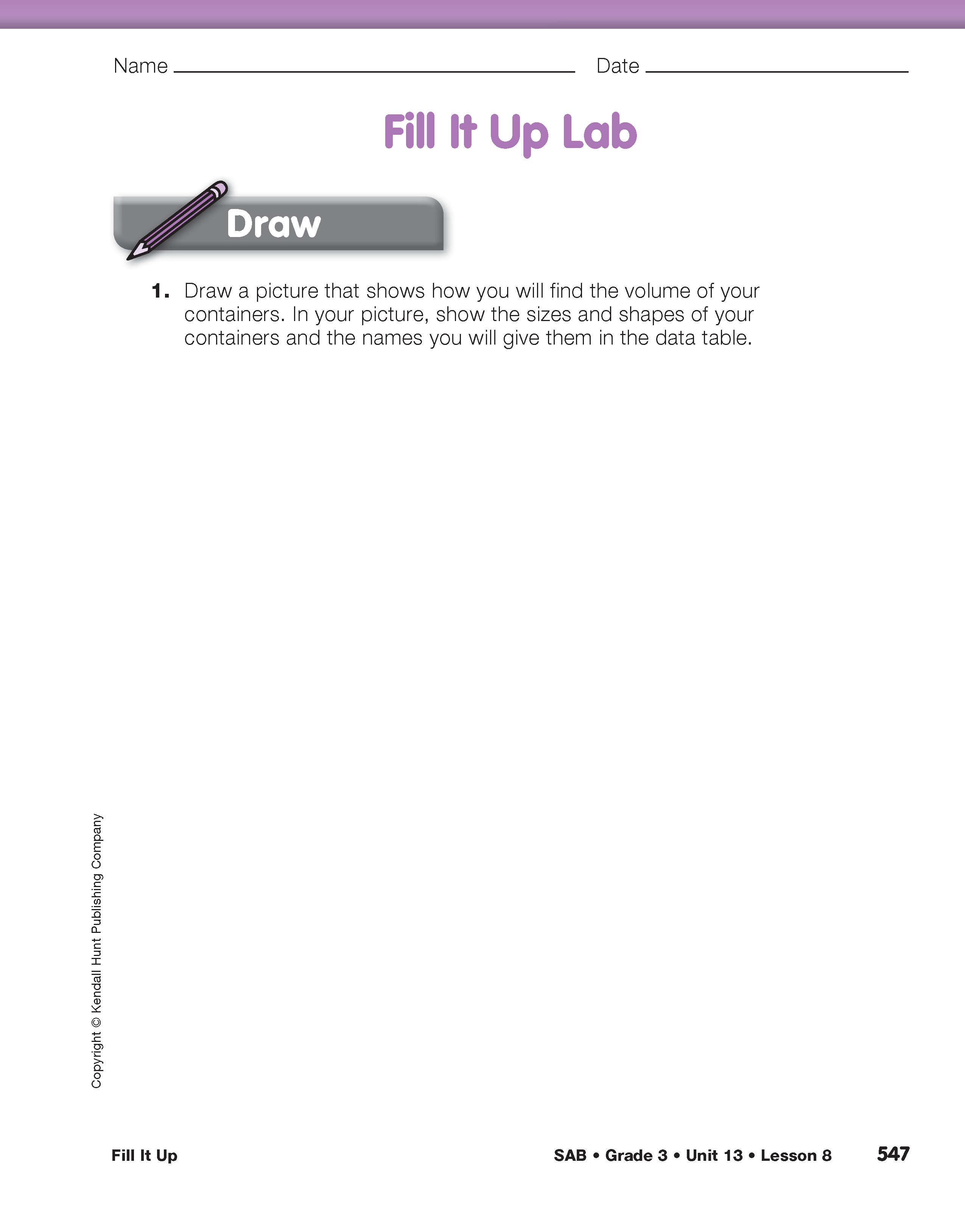Fill It Up
Est. Class Sessions: 3Developing the Lesson
Part 2. Identifying Variables and Drawing the Picture
Identify Variables. After students have explored different ways to find a container's volume and can do it reasonably accurately, they are ready to begin the lab. The Fill It Up Lab pages in the Student Activity Book help children organize their investigation according to the TIMS Laboratory Method: drawing a picture, collecting and organizing data in a data table, graphing the data, and analyzing the data.
Start the lab by giving each group at least three containers of different sizes. Students should identify the two main variables of the investigation. Tell them to think about what they knew and what they were trying to find out when they devised a plan to help Lee Yah find the volume of her container.
In this context, ask:
Explain that the investigation will have the same variables.
Say:
Draw a Picture. Direct students' attention to Question 1 in the Draw section of the Fill It Up Lab pages in the Student Activity Book. Once the variables are identified, students draw a picture of the investigation. Remind students that the purpose of their drawing is to communicate the details of how they will conduct their experiment.
Ask:
Students' drawings should indicate their method of finding the volume: are they pouring water from the cylinder to the container or from the container to the cylinder? Their pictures should show the relative sizes and shapes of their containers along with the names that the containers will be given in the data table (e.g., red cup, peanut butter jar, tall jar).















